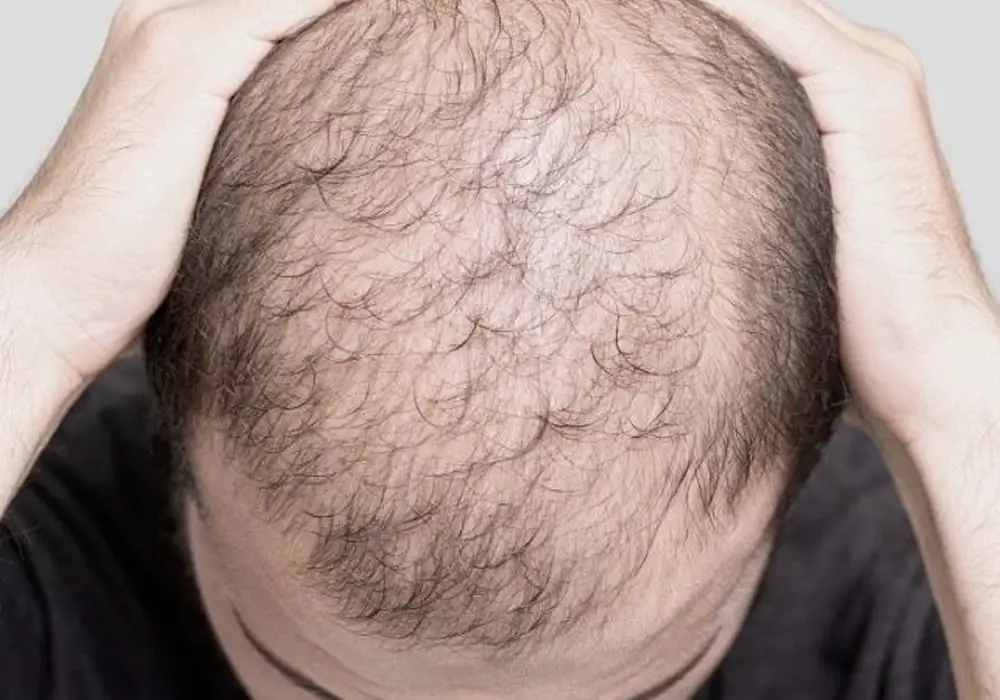The key to curing male pattern baldness, a condition that affects up to 50% of men worldwide, could lie in a sugar that occurs naturally in the human body, scientists at the University of Sheffield have said.
The age-old problem of male pattern baldness
In a study published in the journal Frontiers in Pharmacologyresearchers have discovered that a sugar called 2-deoxy-D-ribose (2dDR), which plays a key role in various biological processes in both animals which in humans, can stimulate hair regrowth in mice.
Over the past eight years, scientists from Sheffield and COMSATS University Pakistan have been studying how sugar can help heal wounds by promoting the formation of new blood vessels. During the research, the team also noticed that hair around healing wounds appeared to grow faster than those that hadn’t been treated.
To further investigate this, the scientists created a model of testosterone-induced hair loss in mice, similar to the cause of male pattern baldness. The team found that applying a small dose of natural sugar helped form new blood vessels, which led to hair regrowth.
The study results show that deoxyribose sugar is as effective at regrowth as Minoxidil, an existing drug used to treat hair loss. However, the research offers a potential alternative approach to stimulate hair growth through a natural deoxyribose sugar.

Professor Sheila MacNeil, Emeritus Professor of Tissue Engineering at the University of Sheffield, said: “Male pattern baldness is a very common condition affecting men all over the world, but there are currently only two FDA-approved drugs to treat it.
“Our research suggests that the solution to treating hair loss may be as simple as using a natural sugar, deoxyribose, to increase blood flow to hair follicles and promote hair growth.
“The research we have conducted is at a very early stage, but the results are promising and
warrant further investigation. This may offer another approach to treating this condition that can affect men’s self-image and confidence.”
Professor (Associate) Muhammed Yar (TI) from IRCBM, COMSATS University Pakistan, said, “This pro-angiogenic deoxyribose sugar is natural, inexpensive and stable and we have shown that it can be delivered by a variety of gels or carrier dressings. This makes it an interesting candidate to be explored further for the treatment of male pattern hair loss.”
What is male pattern baldness? Can anything be done?
Male pattern baldness is a type of hair loss, specifically hair loss above the ears. This type develops slowly, notes the American Academy of Dermatology. Most men experience hair loss at some point in their lives.
How old were you when you first noticed your hair loss? You were most likely in your 30s, notes the Cleveland Clinic, but you may have been a teenager. The older you get, the more likely you are to see the symptoms of male pattern baldness.
You may have heard about the genetics of male pattern baldness. Yes, male pattern baldness is usually influenced by the genes you are born with. There may be a history of this problem in your family. Interestingly, genes passed down from your mother’s side of the family can also influence your risk. So, if you want to get an idea of what you might look like as you age, look at your maternal grandfather’s hair.
The symptoms of male pattern baldness are not complex. There are just a few.

“First,” dermatologist Dr. Dawn Davis said in a recent Mayo Clinic article , men “will notice thinning around the temples, which will then continue to recede toward the back of the scalp. Those areas will eventually meet a bald patch near the hair curl at the back of the crown of the scalp.”
The common pattern that gives male pattern baldness its name is the letter “M” shape left behind after the baldness has spread. You may see this shape created by your remaining hair if you look down at your head from above.
Unfortunately, there is no one-size-fits-all, instant cure for male pattern baldness. However, according to the American Academy of Dermatology, treatment can:
•Reduce the chance of losing more hair
•Grow some hair back
Cleveland Clinic dermatologist Dr. Amy Kassouf said in an article that “Recent advances offer great hope in both the treatment and prevention of several types of hair loss.”

A popular medication for male pattern baldness is minoxidil, also known as Rogaine. Currently, minoxidil and finasteride (Propecia) are the only medications you can get to treat male pattern baldness that are approved by the U.S. Food and Drug Administration.
Rogaine works by widening blood vessels, explains the Cleveland Clinic. This helps get more blood to the hair follicles on your head. Propecia works with your hormones. It stops your testosterone from converting to a hormone called DHT. Experts think DHT may affect the size of your hair follicles, making them smaller.
There are also surgical options, such as hair transplants. In this case, your doctor takes the skin with healthy hair and moves it to your scalp. You may need more than one transplant before your hair looks natural.
You may also want to try platelet-rich plasma injections. This process involves injecting your own plasma into your scalp to help it grow hair.
Finally, there are wigs that may look natural on you. You can also talk to a hairstylist about how to best style your hair to hide your baldness. If you notice that you are losing hair, talk to your doctor about your options. It is important to start treatment as soon as possible.
Treat the root cause of baldness with a resorbable microneedle patch
While some people say baldness is the “new sexy,” for those who are losing their hair, it can be distressing. There are a number of over-the-counter remedies available, but most of them don’t address the root causes: oxidative stress and poor circulation. Now, researchers writing in ACS Nano have designed a preliminary microneedle patch containing cerium nanoparticles to address both issues, regrowth in a mouse model faster than a leading treatment.
The most common hair loss condition is called androgenetic alopecia, also known as male or female pattern baldness. Hair loss is permanent for people with this condition because there are not enough blood vessels around the follicles to deliver nutrients, cytokines, and other essential molecules. Additionally, a buildup of reactive oxygen species in the scalp can trigger the premature death of cells that form and grow new hair.
Previously, Fangyuan Li, Jianqing Gao, and colleagues determined that cerium-containing nanoparticles can mimic enzymes that remove excess reactive oxygen species, which reduces oxidative stress in liver injury, wounds, and Alzheimer’s disease.

These nanoparticles cannot penetrate the outermost layer of the skin. So, the researchers wanted to design a minimally invasive way to deliver cerium-containing nanoparticles near the hair roots deep under the skin to promote hair regrowth.
As a first step, the researchers coated the cerium nanoparticles with a biodegradable polyethylene glycol lipid compound. They then made the soluble microneedle patch by pouring a mixture of hyaluronic acid, a substance naturally abundant in human skin, and cerium-containing nanoparticles into a mold. The team tested the control and cerium-containing patches on male mice with bald patches formed by a hair removal cream.
Both applications stimulated the formation of new blood vessels around the hair follicles of the mice. However, those treated with the nanoparticle patch showed faster signs of hair transitioning into the root, such as earlier skin pigmentation and higher levels of a compound found only at the beginning of new hair development.
These mice also had fewer oxidative stress compounds in their skin. Finally, the researchers found that the cerium-containing microneedle patches led to faster regrowth of mouse hair with similar coverage, density, and diameter compared to a leading topical treatment, and could be applied less frequently.
Microneedle patches that introduce cerium nanoparticles into the skin represent a promising strategy for reversing hair loss in patients with androgenetic alopecia, researchers say.
#Male #Pattern #Baldness #Cure #Answer #Sugar